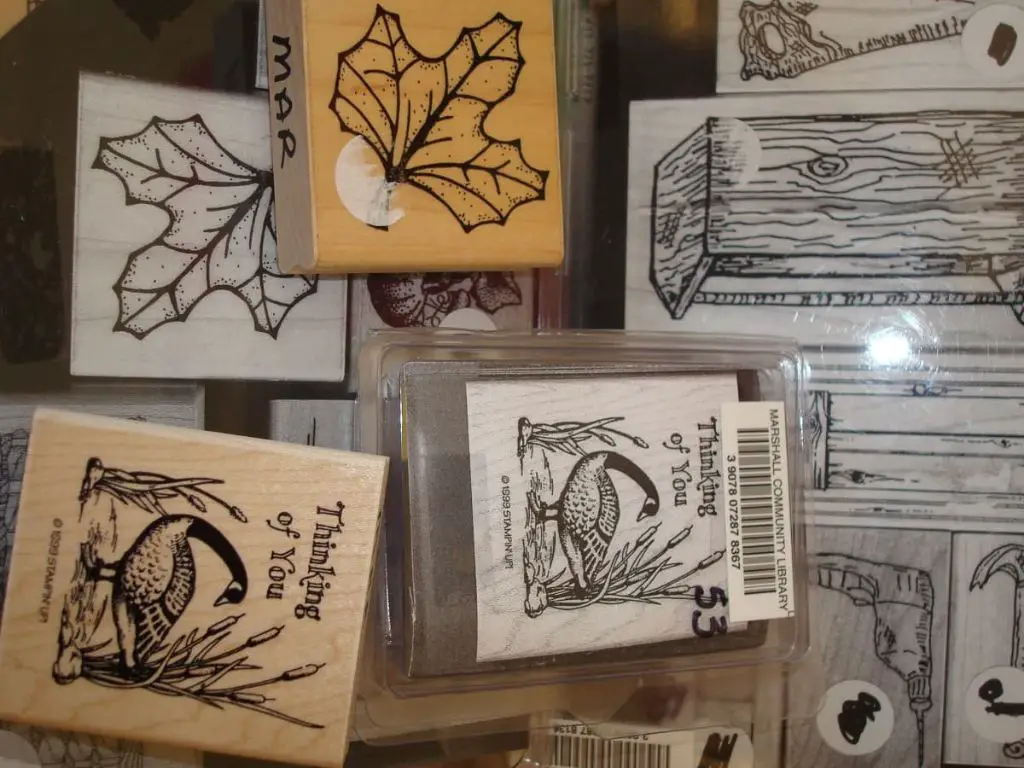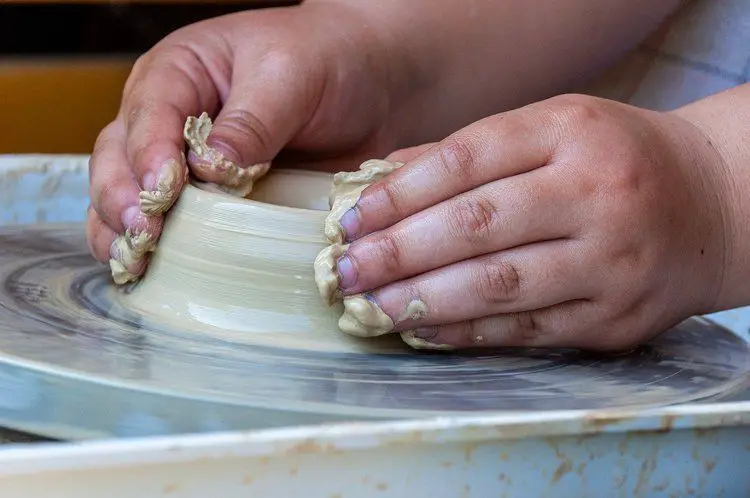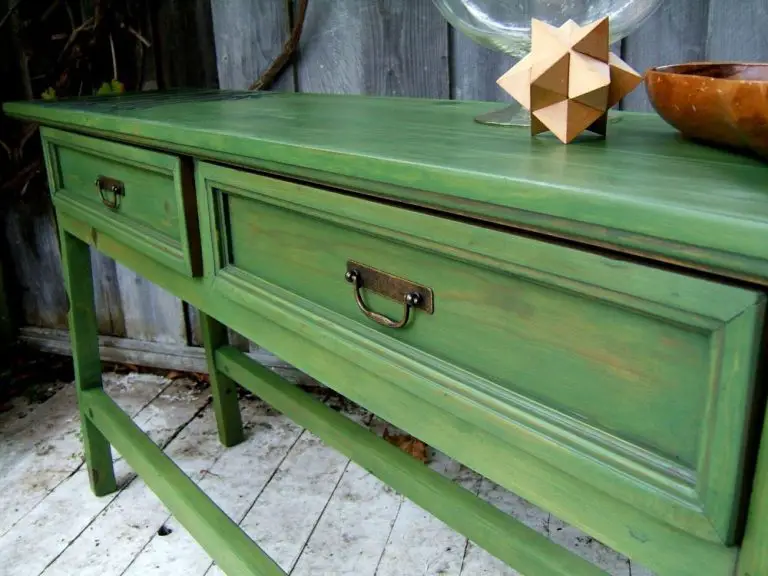Do Rubber Stamps Work For Pottery?
Rubber stamping is a popular decorating technique that can add creative designs and patterns to pottery. By imprinting designs into clay using rubber stamps, potters can efficiently decorate pieces with consistent imagery. Rubber stamping emerged as an accessible alternative to freehand decoration, allowing potters to quickly duplicate motifs. With the right techniques, rubber stamps can effectively decorate both wet clay and bisque ware.
There are advantages and disadvantages to using rubber stamps that potters should weigh when considering incorporating this technique into their pottery process. Factors like type of clay, desired designs, and glazing should inform what methods work best. Approaching rubber stamping thoughtfully allows potters to enhance their work with handcrafted flair.
Advantages of Rubber Stamps for Pottery
Using rubber stamps allows potters to quickly and easily apply designs to their work. Compared to freehand painting or carving, stamps are a fast way to decorate pieces with intricate patterns or imagery. Here are some of the main benefits of using rubber stamps on pottery:
Rubber stamps make it easy for potters to apply consistent, repetitive designs. By rocking the stamp over the clay surface, potters can create continuous patterns like borders or allover textures. The stamp ensures each impression is an identical image, so the design remains uniform across the piece. This can be especially helpful for production potters looking to decorate multiples of the same item.
Stamps also allow beginner potters to add complex designs they may not be able to create freehand. Detailed images like animals, landscapes, lettering, and geometric shapes can be transferred onto clay quickly with a rubber stamp. Sketching or painting these motifs freehand takes significant artistic skill, which stamps help shortcut.
Compared to carving or incising, stamping is gentler on clay. It leaves a lighter impression that is less likely to tear through thin or soft clay bodies. The clay also bounces back cleanly after stamping, whereas carved lines often drag and deform the surrounding surface.
Rubber stamping is highly accessible and affordable. Potters can find stamps at most craft stores for under $10, or order custom designs online. Building a large collection of stamps is easy and inexpensive, allowing almost endless design options.
Overall, rubber stamps make applying imagery and patterns to pottery fast, consistent and approachable for decorators of all skill levels. Their ease of use and low cost make stamps an excellent decorating tool for both beginner and professional potters.
Disadvantages of Rubber Stamps for Pottery
One disadvantage of using rubber stamps for pottery decoration is the limited design options compared to other techniques. Because rubber stamps require carving a design into the stamp material, the complexity of designs is restricted. Intricate patterns with fine details are difficult to capture in a rubber stamp. The carved lines in the stamp also have a minimum width, limiting how small and delicate a design can be.1
In addition, rubber stamps only imprint the inked design onto the clay surface, lacking the artistic variations in line width, depth, and texture that can be achieved through hand-carving, sgraffito, or slip trailing. The stamped image will appear uniform. While consistent patterns can be desirable, some potters feel rubber stamping produces a less organic, customizable look compared to other decorating techniques.
Rubber stamps are also limited to repeating designs, where each impression is identical. It can be challenging to create flowing, asymmetrical patterns. Each stamped element has defined edges, unlike freehand brushwork that softly blends and fades. With repetition, stamped designs may end up looking monotonous.
The number of available stamps poses another constraint compared to limitless hand-drawn options. Potters must either purchase ready-made stamps or go through the effort of custom carving each new design they wish to use. The range of accessible images ultimately depends on the stamps in one’s collection.
In summary, while rubber stamping provides consistency and convenience, the inherent restrictions of the medium narrow the scope of achievable styles and motifs. Potters who aim for intricate detailing, tonal variation, asymmetric or fading patterns, and unlimited original designs may find other decoration methods better suit their artistic vision.
Best Practices for Using Rubber Stamps on Pottery
When using rubber stamps on pottery, there are some best practices to follow for achieving the best results. Two key factors are proper ink selection and utilizing the right stamping techniques.
For ink selection, it’s important to choose an ink that is formulated for use on ceramics and can withstand high firing temperatures. Oil-based inks and underglazes specifically designed for stamping work well. Avoid using any water-based inks like craft acrylics, as these will burn out in the kiln. Select stamps with deeply etched designs since this allows the ink to transfer better onto clay surfaces.
When stamping, working with leather-hard clay produces crisp impressions. Use firm, even pressure when transferring the design and avoid rocking or twisting the stamp. Lift straight up after pressing down to keep the lines clean. If stamping wet clay, you may need to re-ink the stamp each time for maximum coverage. Allow stamped pieces to dry fully before firing.

To preserve intricate stamp designs, apply glaze thinly by brushing or dipping rather than spraying. Terra sigillata is also excellent for highlighting stamped textures and patterns. With proper inks and techniques, potters can achieve beautiful handcrafted looks using rubber stamps on both functional ware and decorative ceramic pieces.
For more tips on ink selection and application methods, refer to this helpful guide: https://community.ceramicartsdaily.org/topic/14426-rubber-stamps/
Alternative Decorating Techniques
While rubber stamping is a popular technique, there are many other ways to decorate pottery as well. Here are some of the top alternative decorating techniques:
Hand Painting
Hand painting directly onto bisqueware or glazed surfaces allows for intricate, custom designs. Glazes, underglazes, and colored slips can all be used with hand painting (Ceramic Decorating Tool Techniques). Brushes, sponges, and other tools create different effects. Hand painting gives full control over the design.
Decals
Decals involve applying pre-made ceramic decorations that have been printed on paper. The decal paper is soaked in water, slid off its backing, and transferred onto the bisqueware piece. Decals allow for detailed imagery that would be difficult to hand paint (21 Great Ways to Decorate Clay – The Pottery Wheel).
Engraving
Engraving involves using tools to carve lines and patterns into leather-hard or bisque clay. Fine details can be achieved with metal loop tools. Engraving creates interesting textures and dimensional designs.
Types of Rubber Stamps for Pottery
There are two main types of rubber stamps that can be used to decorate pottery – custom stamps and premade stamps. Each offers unique benefits for potters.
Custom stamps allow potters to create their own unique designs. These are hand carved out of rubber by the artist or ordered through a custom stamp maker. The benefit of custom stamps is you can create any image or pattern you’d like. The downside is they can be more expensive and take time to produce.
Premade stamps come in endless design options from sources like craft stores and online retailers. These offer convenience and affordability. Premade stamps are a quick and budget-friendly way to add patterns like flowers, trees, geometric shapes, animals, letters and more. The major downside is lack of originality since these designs are mass produced.
Stamps themselves are hand carved or laser cut into materials like gum rubber, silicone, wood and laser rubber. Gum rubber offers the traditional stamp feel and works well but can dry out. Silicone has more flexibility and doesn’t dry out as quickly. Wood and laser rubber offer crisp stamped impressions. The material affects the stamp quality and carved impression.
Applying Glazes Over Stamped Designs
When applying glazes over stamped pottery designs, crafters need to consider how the glaze will interact with and affect the stamped pattern. Glazes can accentuate texture and dimension from stamping, but can also obscure finer details if applied too thickly. Here are some tips for glazing over stamped pottery:
Test glazes first on a stamped sample or test tile – glaze can react differently over stamped areas vs smooth clay. Try various thicknesses and make notes on results before glazing your final piece.
Watery glazes and stains tend to show stamped textures and patterns best without filling in all the crevices. Thick glazes can overwhelm and obscure intricate stamps.
Use multiple coordinated glazes – try a watery base glaze overall, then add thicker glaze accents over selected areas of stamps. Or use thicker glaze on the background clay, and lighter glaze over the stamps.
Consider layering – use one color glaze on the stamped design, then wipe away glaze from the top surfaces while still wet to reveal the clay color and stamped pattern.
Take advantage of glaze breaking over textured stamps and leaving color in recessed areas – this can add aged, antiqued effects.
When applying glaze over stamps, use a soft brush, sponge, or cloth rather than fully dipping or pouring on glaze. This gives more control over glaze application.
Mask off areas with tape if you only want glaze over select stamped elements. Remove tape after first glaze firing before second glaze coat.
Aim for balance between showing off the stamped design, and using glazes to enhance and unify the overall look. Test pieces will help guide what glaze process best flatters your stamped motif.
Source: https://www.pinterest.com/mhkasper1/stamped-pottery-with-under-glaze/
Notable Potters Who Use Rubber Stamps
Rubber stamping has been embraced by many contemporary potters as a quick and easy way to decorate ceramics. Some notable artists who incorporate stamping into their pottery work include:
Autumn McKissick – Based in Arizona, McKissick creates brightly colored Functional pottery accented with playful stamped designs. Her work often features animals, florals, and geometric patterns stamped around the rims of mugs, plates, and bowls.
Leslie Ferrin – Ferrin owns a pottery gallery in the Berkshires and produces tableware adorned with bold repeat stamped patterns. Ferrin frequently uses stamps with textural surfaces to add visual interest to her pieces.
Linda Arbuckle – An professor and artist based in Florida, Arbuckle handcrafts porcelain functional ware and stamps custom graphic designs inspired by Florida’s natural landscapes onto each unique piece.
Ayumi Horie – Known for her slipcast stoneware pottery, Horie often enhances her colorful glazes with graphic stamps, using both custom stamps she designs herself as well as found objects as stamps.
These are just a few examples of leading ceramic artists who integrate stamping into their artistic processes. Their works demonstrate the creative possibilities of stamping on pottery.
Rubber Stamping Inspiration
Rubber stamping offers endless creative possibilities for decorating pottery. Here are some ideas to get your creative juices flowing:
Use geometric or abstract stamps to create bold, graphic patterns. Overlap and layer stamps in different colors for a stylized effect. This contemporary stamped pendant necklace from Etsy seller InnerSunCeramics artfully mixes geometric shapes and abstract stamps in shades of blue and green:
Contemporary Design Ceramic Pendant Necklaces, Unique Stamped Pottery Designs
Stamp meaningful words, poems, or inspirational sayings onto mugs, plates, or bowls. Use different size letter stamps and alternate between printing and cursive fonts for visual interest.
Impress leaves, flowers, trees, or other organic shapes to create natural motifs. Vary the stamp pressure for subtle variations. Layer colored glazes over stamped botanical designs for a stained glass effect.
Use stamps with cultural symbols like Native American, Indian, Moroccan, or Mexican motifs to impart an exotic flair. Research traditional iconography to use stamps in an authentic way.
Upcycle old books, sheet music, or maps by stamping passages onto pottery for a collage-like feel. This gives new life and purpose to printed materials.
Stamp large-scale abstract backgrounds then paint or draw finer details on top. This provides visual depth and contrast.
The possibilities are endless! Stamping allows you to add original, personalized touches to pottery while unleashing your creativity.
Conclusion
In summary, rubber stamps can be an effective tool for decorating and personalizing pottery pieces. When used properly with high quality materials, stamps allow potters to quickly apply repeat imagery or customized designs. However, stamps do have some drawbacks like potential wear over time and limiting creative options compared to freehand techniques. Overall, stamps work for pottery as long as potters select the right type of stamp, use proper inking and application, and fire glazed pieces correctly. Stamps should be seen as one decoration option among many for potters to utilize when seeking the desired aesthetic for their ceramic work.
Rubber stamps have evolved from basic office tools to an art form embraced by crafters and artisans globally (The History of Stamping). While freehand decoration remains popular for pottery, stamps help add personalized flair efficiently. As with any technique, understanding best practices for stamp use allows potters to enhance their pieces. With careful, creative application, stamps can produce beautiful, distinctive pottery worthy of being signed.





